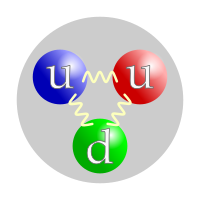
Photo from wikipedia
We study the hadron-quark mixed phase, which may occur in the interior of neutron stars. The relativistic mean-field model is employed to describe the hadronic phase, while the Nambu--Jona-Lasinio model… Click to show full abstract
We study the hadron-quark mixed phase, which may occur in the interior of neutron stars. The relativistic mean-field model is employed to describe the hadronic phase, while the Nambu--Jona-Lasinio model is used for the quark phase. We examine the effects of nuclear symmetry energy in the hadronic phase and repulsive vector interaction in the quark phase. For the treatment of hadron-quark mixed phase, we describe and compare four methods: (1) energy minimization method; (2) coexisting phases method; (3) Gibbs construction; and (4) Maxwell construction. The finite-size effects like surface and Coulomb energies are taken into account in the energy minimization and coexisting phases methods, which play a key role in determining the pasta configuration during the hadron-quark phase transition. It is found that massive neutron stars may contain hadron-quark pasta phases, but pure quark matter is unlikely to occur in the interior of neutron stars.
Journal Title: Physical Review C
Year Published: 2019
Link to full text (if available)
Share on Social Media: Sign Up to like & get
recommendations!